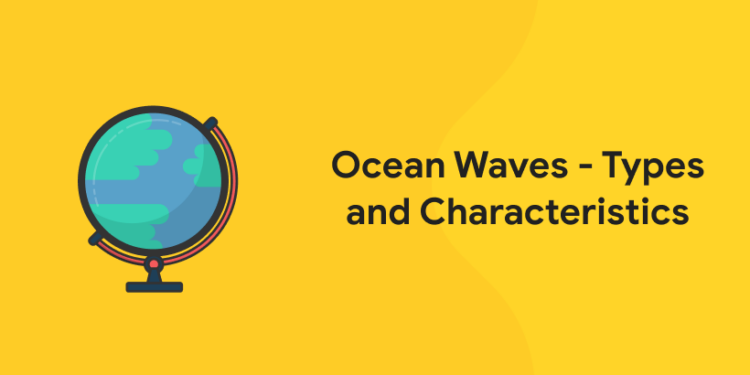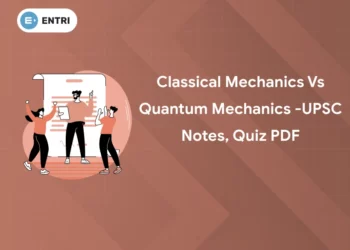Table of Contents
Ocean waves are pleasing to the eye. The sight and sound of these waves can give us joy, calm our mind or even raise an alarm, depending upon their nature. They are in continuous motion – rising up, moving forward, going down and again rising. Ocean waves are either caused by wind on the surface of the water that creates friction between the air and the water or by abrupt disruptions in the ocean or the movement of tides. When wind blows across the surface of the ocean, it creates small ripples, which eventually become waves with the passage of time and distance. Once formed, ocean waves can travel great distances before reaching the coast. The size of waves vary in length from a fraction of a centimeter for the smallest ripples to half the circumference of Earth for the tides. The height of a wave is determined by the wind strength, the length of time it blows and the distance it travels over the water. Oceanographers measure wave height using a term called “significant wave height”, which is the average height of the largest 33 per cent of waves in that region of ocean at the time.
Attempt Free GK Mock Test! Download Entri App!
Cause of Ocean Waves
Waves are basically disturbances on the surface of the water, which can be formed on all types of water bodies. Wind is the cause of most ocean waves. The friction between the wind and water creates the movement of energy that passes through the water molecules, without moving the water molecules themselves very much. The waves do not cause the water to move. Instead the movement of energy through the water causes very little movement of water. Energy in the water causes water molecules to move up and down rather than left or right which is why we see ships moving up and down whenever it encounters waves in the ocean. The behavior of a wave depends on the relation between the
wave’s size and the depth of water through which it is moving. Waves can change direction by refraction and diffraction, can interfere with one another, and reflect from solid objects.
Types of Ocean Waves
An ocean wave is made up of two main parts, the wave crest and the wave trough. The wave crest is the highest point in the wave and the wave trough is the lowest part of the wave. Waves are classified on the basis of the following:
- Disturbing force
- Free waves vs. forced waves
- Restoring force
- Wavelength
There are four main types of waves:
- Wind Waves
- Ocean Swells
- Tidal Waves
- Tsunamis
Attempt free GK Mock Test! Download Entri App!
Let us have a look at these in detail:
Wind Waves
These are caused by the friction between local winds and surface water. They are directly caused by the wind in that location. These waves are small and have a short distance between wave crests unless the wind gets stronger. They blow for a short time will not generate large waves.
Ocean Swells
These are large waves that can travel long distance and are caused by major storms like hurricanes. Over time and distance, sustained wind strength and duration make up a large quantum of energy beneath the ocean’s face, forming deeper waves known as swells. They do not change their height or shape until they reach a distant shore as breaking waves.
Tidal Waves
These waves are large and are caused by ocean tides and therefore indirectly by the gravitational forces of the moon and sun. Tidal waves are considered predictable events because ocean tides are predictable events.
Tsunamis
These are giant, devastating waves that can wipe out coastlines and everything on them. They are typically generated by an underwater geological event, such as an earthquake, volcanic eruption, landslide or any major disturbance in the water. Melting glaciers can also induce landslides which have the potential to generate tsunamis. These changes in the surface of the water sends a set of long waves propagating outward from the point of origin. As these waves approach the coastline, they are amplified and become destructive so as the tsunami enters the shoaling water, the wavelength shortens, the speed decreases, and the amplitude increases.
Attempt free Current Affairs Mock Test! Download Entri App!
Characteristics of Ocean Waves
- Crest: the highest point of a wave
- Trough: the lowest point of a wave
- Height: It is the distance between a wave crest and wave trough.
- Amplitude: The distance between the crest or the trough to the still water line in between them is the amplitude. It is the size of a given wave.
- Time Period: It is the time required for two successive crests to pass a fixed point or the time required to produce a single complete wave, or cycle.
- Frequency: The number of waves that cross a fixed point in a given amount of time is the frequency.
- Velocity: The amount of distance in meters per second that a wave travels in one second is it’s velocity.
- Wavelength: The distance that one wave travels before it repeats itself is it’s wavelength. It is the distance between the centers of two consecutive rarefactions or compressions.
Attempt Daily Current Affairs Quiz! Download Entri App!
Tides and Waves
Tides and waves are often thought to be the same, but in reality both are entirely different. The basic differences are as follows:
- The rise and fall of water level in the ocean is known as tide. This is caused by the gravitational pull of the earth. Waves, on the other hand, are a series of crest and trough and are caused by wind.
- Tides occur only in the oceans whereas waves are found in all water bodies.
The key point to clear an exam lies in methodical and planned preparation. If you are a candidate who wants to pursue your dream career and looking for a good start, Entri App has got it covered for you. Entri App provides a great online platform for all those aspiring to appear for various bank exams, government exams and other competitive exams. Our team of experts provide short and precise video classes which helps in learning the concepts. Users get access to flash cards and quizzes and can attempt unlimited mock exams with the same pattern as that of the real exams. We also provide PDFs of previous years’ question papers with solutions.













